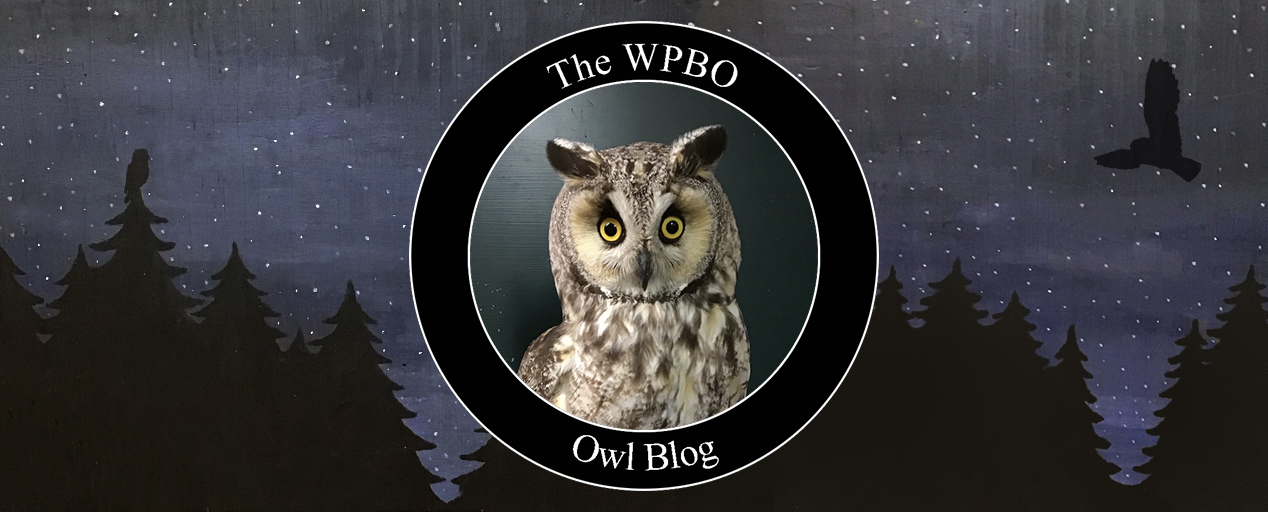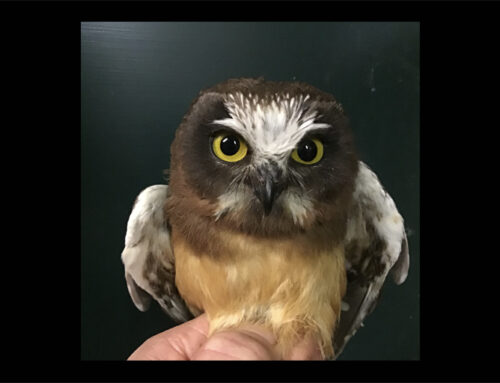Once again, the time between our blog posts produced a couple of productive nights before weather significantly slowed down the owl migration. The three nights after our last post produced 121 new owls, but these last three nights have produced seven. With the exception of the night of April 30, when we banded 39 Northern Saw-whet Owls, the saw-whet numbers have really dropped off. This trend may continue until we see the late-May push of saw-whets, and that late push does not always happen. We’re curious to see what happens with Long-eared Owls for the remainder of the season. During some springs, the long-eareds continue to move into late May; other years, their migration can effectively end around this time of the season. Hopefully, the long-eareds continue, and we will see a late-season spike in the saw-whet numbers. Only time will tell. To date, we have banded 577 saw-whets, seven boreals, 353 long-eareds, and six barreds. We have also recaptured 47 previously banded owls.
We’ve been very satisfied with the results of our efforts to increase our Long-eared Owl (LEOW) captures over the last few years. In addition to this, we are excited that Northern Michigan University graduate student Emily Griffith is using hundreds of LEOW feather samples we collected for use in her master’s project. One of the things Emily is doing is running DNA analysis on the samples we collected to determine the sex of the owls. A few years ago, Denver Holt, founder and president of the Owl Research Institute, published a paper on the technique he developed for assigning sex to LEOW. He developed this technique while working with a breeding population of LEOW for decades. Adding to our excitement over Emily’s project is the fact that we have had the opportunity to join Denver for some LEOW banding in Montana a couple of times.
In 1997 I was able to go to Denver’s LEOW breeding study site and see how he was documenting the coloration of males and females on known sex birds at their nest sites. Then in 2010, we saw Denver at the Raptor Research Foundation Conference, and our conversation quickly turned to long-eareds. He invited us out to Montana to join him and his staff for some winter LEOW banding. The long-term studies he has conducted in western Montana are pretty amazing. We are looking forward to Emily’s results, which will undoubtedly increase our knowledge on sexing LEOW.
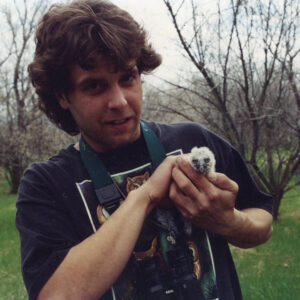
Chris in 1997 with a Long-eared Owl chick at Denver Holt’s breeding study site in Montana.
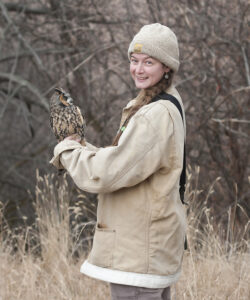
Nova in 2012 with one of Denver’s wintering Long-eared Owls.
2021 Spring Owl Banders
Chris Neri & Nova Mackentley
You can read Chris and Nova’s weekly blog post and follow WPBO’s social media (Facebook, Instagram, and Twitter) for owl banding highlights this season.
Owl Banding Presentations — We apologize, but live education demonstrations of our owl banding program will not be offered in 2021 due to COVID-related risks and restrictions.
If you visit WPBO, please practice social distancing while doing so. Although not required, we encourage you to wear masks if you are in close proximity to other people, even if outdoors. You may read the full 2021 COVID-19 Updates for Michigan Audubon and Whitefish Point Bird Observatory here.
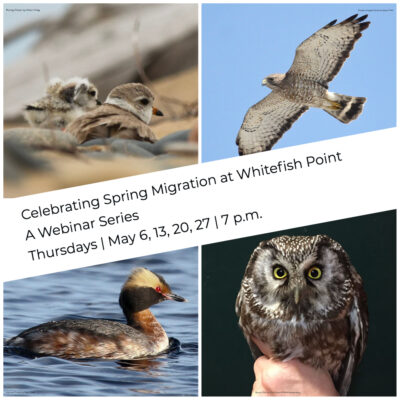
Celebrating Spring Migration at Whitefish Point — A Webinar Series
Owls of Whitefish Point
May 6 | 7 p.m.
Would you like to learn more about the owls at Whitefish Point? Join us for a presentation by Owl Banders Chris Neri and Nova Mackentley, who introduce the ten species of owls seen at the Point, explain the banding process, and review data collected over the years. Their wealth of knowledge about the owl banding history at WPBO is enlightening and inspirational! Please note that Chris and Nova’s presentation is prerecorded (they are in the middle of their banding season, after all!). We will have other avian experts and WPBO veterans on hand to answer your questions about these wondrous raptors and how banding supports avian research efforts.
This event is the first in a four-part series of free webinars celebrating spring migration at the Point and highlighting WPBO research programs.

